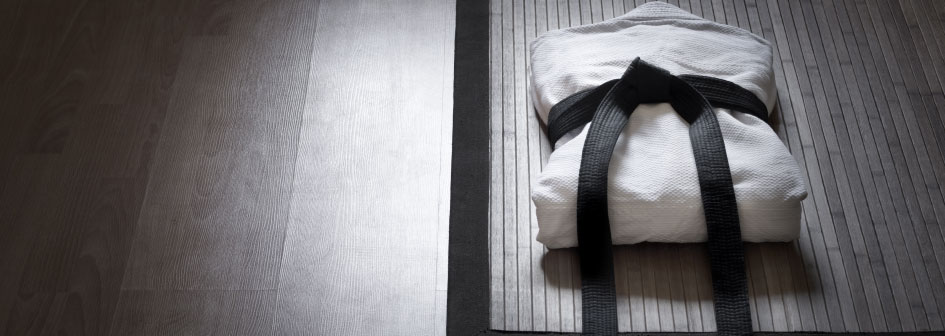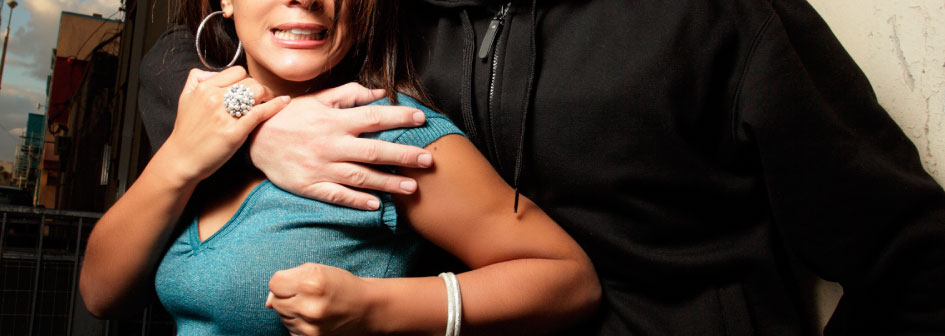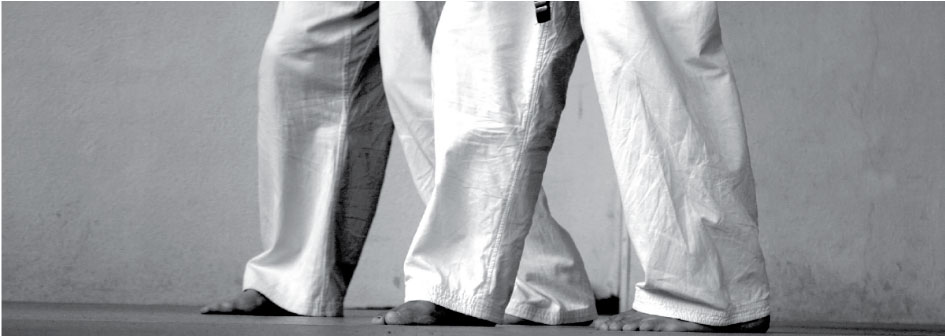Dojo Etiquette
1. Upon entering and leaving the dojo, always perform a standing bow toward O'Sensei's portrait.
2. Remove your shoes and place them neatly off of the mat. This not only keeps the dojo clean and free of tracked in dirt but it also symbolizes leaving your material day, your ego, and your troubles at the front door.
3. When entering and leaving the mat area, always perform a seated or standing bow facing the Kamiza.
4. Respect your training tools. Dogi should always be clean and in good repair. Out of respect for your training partners, always wash your uniform after no more than two training sessions. Dogi should never be left overnight, always take them with you when leaving the dojo. Weapons should be in good condition and stored in the proper place when not in use.
5. Use good personal hygiene. Finger and toe nails should be trimmed short and kept clean to avoid injury. If you have issues with nail infections (brittle, yellow, or infected) seek out medical care to have the condition remedied.
6. Do not be late for class. Getting on the mat after class has begun is disrespectful to Sensei and is a disruption to your fellow students. Arrive at the dojo early enough to be changed and on the mat 10-15 minutes before class starts. Use this time to warm up or sit quietly in preparation for class. Do nothing to disturb others who are waiting for class to begin.
7. Class opens and closes with a bowing ceremony and it is important for you to participate. If you are unavoidably late for class, sit quietly in seiza, at the edge of the mat, until Sensei gives you permission to join the class. When stepping onto the mat perform a seated or standing bow facing the Kamiza. Do not disrupt the class when entering the mat area.
8. The proper way to sit on the mat is in seiza. If an injury prevents you from sitting in seiza, you may sit cross-legged with your feet underneath. Never sit with your legs outstretched or lean against walls and posts. You must remain alert and aware of your surroundings at all times.
9. Do not leave the mat for any reason without first receiving Sensei's permission.
10. If you must leave the mat or have a question for Sensei regarding practice, go directly to him; never call Sensei over to you. Bow respectfully and wait for his acknowledgment.
11. While Sensei is demonstrating a technique, you should sit quietly and attentively in seiza. After the demonstration, bow to Sensei, then bow to a partner, and begin practice.
12. When Sensei signals the end of a technique or practice session, stop immediately, bow to your partner, and line up with the other students.
13. When receiving personal instruction during class, sit attentively in seiza. Bow to Sensei when he has finished.
14. If someone near you is receiving personal instruction from Sensei, you may stop your practice and observe. Sit quietly in seiza and bow to Sensei when he has finished.
15. Never stand around idly on the mat; you should be practicing or, if necessary, attentively waiting your turn.
16. If you know the technique being studied and your training partner does not, you may lead your partner through the technique but do not assume the role of the instructor.
17. Your are here to practice Aikido as interpreted and taught by Waite Sensei; do not force your ideas on others. At the same time respect those who are more experienced than you.
18. During class keep talking to a minimum and directly related to what you are practicing.
19. It is everyone's responsibility to keep the dojo clean and in good repair. If you see something that needs to be done, show initiative and do it. If you're not sure what to do, alert a senior student to any need you may uncover. If you would like to volunteer any personal skills that might be an asset to the dojo, please speak to a senior student.
20. There is no eating, drinking, or gum chewing in the mat area. There is no smoking anywhere in the dojo.
21. In order to prevent injury or damage to personal property, no jewelry should be worn during pratice.
22. All cell phones and pagers should either be turned off or on silent so as not to disrupt class.
23. Visitors are always welcome to observe class but the following rules of etiquette should be followed:
a. Sit quietly and respectfully.
b. Do not disturb anyone on the mat.
c. Do not talk or walk around while Sensei is demonstrating.
d. Do not eat, drink, or chew gum in the mat area. Do not smoke in the dojo.
e. Make sure all cellphones and pagers are either turned off or on silent.
24. All visitors should be treated as prospective students and training partners. Everyone should make a concerted effort to make vistors, and new students as well, feel welcome. If a visitor enters the dojo during practice, either excuse yourself from class to greet them or alert a senior student who may not have seen them enter.
25. If you are unsure of what to do in a particular situation, ask a senior student or simply follow their lead.
26. Most importantly, always have fun and enjoy your practice!
Learn more about:
Our Dojo: Aikido of Chester County, Dojo Rules, Dojo Etiquette
What to Expect: My First Class, What to WearOur Instructors: Donovan Waite, Tony Fiore, Ken Cadogan, Joe Varano
Check out our: Aikido Blog


